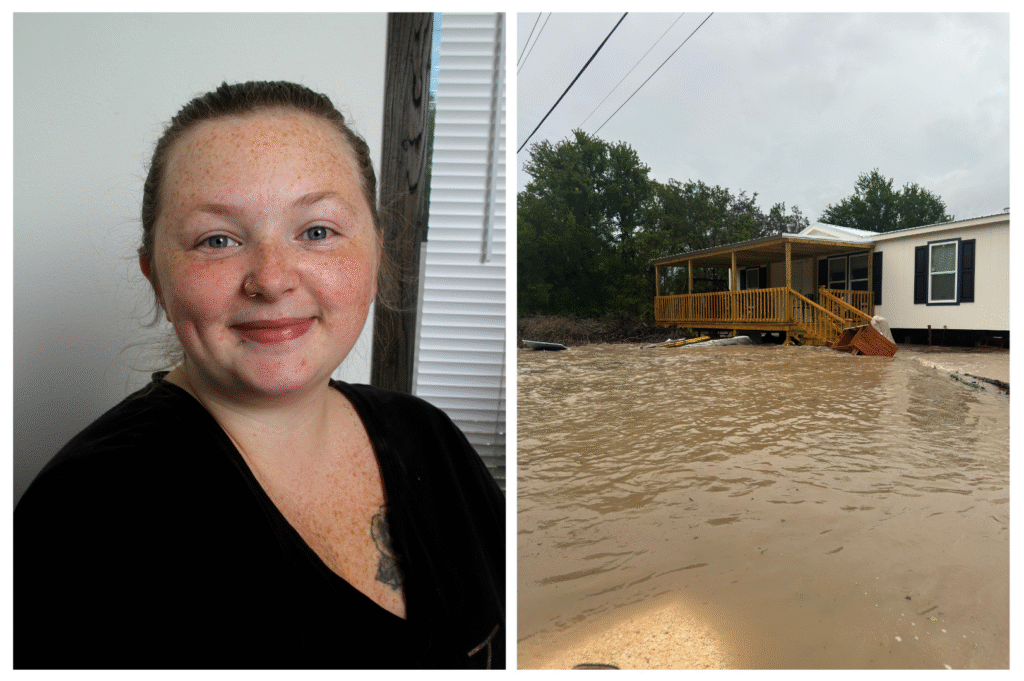Summary
- ⛈️ A week after floods hit central Texas, families were already spending GiveDirectly relief cash.
- 👨👩👧👦 In total, 578 low-income families received $2,400 each across 20 flood-hit zip codes in Texas.
- 💸 61% said they received no other emergency aid at all — cash from GiveDirectly was the only support they got.
- 📲 Most enrolled in under a minute via the Propel food stamps app; others applied through a new open-access form supported by local partners.
On July 4, floodwaters tore through homes across central Texas. In counties like Kerr, Williamson, and Travis, people lost housing, belongings, and access to essentials overnight. By July 11 –– just one week later –– GiveDirectly was sending $2,400 payments to help low-income families begin their recovery.
In total, GiveDirectly sent $1.4M from over 1,300 donors to 578 Texas families across 20 flood-affected zip codes. It’s one of the fastest U.S. cash programs we’ve ever run.
Note: this response was entirely paid for by donors who gave to our specific Texas fund; general donations through our website go to our Africa cash for poverty relief work.
GiveDirectly cash was the only help most of these families received
Most disaster response efforts begin with in-kind goods: bottled water, shelf-stable food, used clothing. But low-income survivors also struggle to afford rent, transportation, hotel stays, insurance deductibles, and childcare. Cash lets them meet those needs flexibly and, when delivered quickly, can prevent harm from spiraling.
GiveDirectly gave eligible households $2,400, roughly enough to cover two weeks of essential expenses for a family of three. Recipients told us this help was vital:
- 64% said they planned to spend the money on housing — rent, utilities, temporary lodging, or repairs
- 61% said they had not received any other emergency aid
Skylyn, 26, used her payment to keep her baby safe

Skylyn, 26, lives with her mother and two children in rural Williamson County. In July, she had just begun raising chickens and growing food on a small homestead when the floods hit.
“It was very chaotic, very scary. I almost got swept under the house, but thankfully, my boyfriend James grabbed me. Our truck was partially submerged, but thankfully it still ran, so we made it to a hotel that night. But we had to pay out of pocket, and we barely had any money. That was really tough.”
Their home was badly damaged. Floodwaters washed out the support beams and covered their yard in debris — broken glass, furniture, and snakes.
“We hadn’t had any help. Not from the county, not from FEMA. Nothing. It took me two months of begging just to get a dumpster.”
Skylyn received $2,400 directly into her bank account. She used it to pay for weeks of temporary lodging, baby formula, phone service, and basic necessities.
“This support was amazing. We had only $200 to our name, and our account was going negative just to keep the baby safe. Whenever you get actual money — not gift cards, not services — it makes a huge difference. You can cover what you actually need. That’s the best help we’ve received.”
Our two-stage model got money to Texans quickly and fairly
To reach people quickly after the floods, we used a two-stage approach:
1️⃣ Rapid enrollment through a food stamps app. We partnered with Propel, a popular app used by SNAP (food stamp) recipients, to identify people already living in flood-affected zip codes. Since Propel users are verified as low-income, we could target based on geography and income without requiring an application. Users received an in-app offer for cash assistance and, after filling out a short form, received $2,400 directly to their bank account or on a prepaid card provided by our partner GiveCard. Some were paid as quickly as two days later.
2️⃣ Follow up with an open-access application. Reaching families not using the food stamps app was critical in a state like Texas, where SNAP participation is low. So we launched an open application in partnership with AidKit that allowed anyone in eligible areas to apply — our first time ever doing so for a disaster response. To ensure people knew about the application, we conducted outreach that included postcards, flyers, geo-targeted ads, and community partner referrals. In the end, we enrolled about 240 additional families through this process.
Faster aid delivery is possible. This is what it looks like.
Our Texas flood response showed that it is possible to get money to families within days after a disaster, faster than nearly all other types of assistance. By pairing streamlined, in-app targeting with an open-access application, we were able to efficiently reach a broader set of impacted people, including many who might otherwise be missed.
Now more than ever, with federal disaster spending under pressure, we’re continuing to strengthen our model for delivering cash aid in the U.S. In doing so, we aim to set the bar for what high-quality disaster response looks like: fast, fair, and centered on people’s real needs.